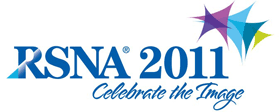
Abstract Archives of the RSNA, 2011
Sureyya Burcu Gorkem MD, PhD, Presenter: Nothing to Disclose
Abdulhakim Coskun MD, Abstract Co-Author: Nothing to Disclose
Our aim is to show the diagnostic ability of the chest MRI in pediatric pulmonary diseases by comparing with the CT findings.
Between May 2009 and February 2010, 63 children who had taken a multislice chest CT with any indication underwent a chest MRI within 2 days. Children younger than 6 year-old were given intranazal 0.1-0.2 mg/kg midazolam for sedation. A standard non-contrast chest MRI protocol was done by 1.5 T MRI unit. T1-FFE IP (Fast Field Echo Inversion Prepulse), T2 B-FFE M2D (Balanced Fast Field Echo Multipl 2D), T1-TSE, T2-TSE and STIR sequences in axial and coronal images were obtained.
Of the 63 patients; 34 were male, 29 were female. Mean age is 8,9±4,6 years. Patients were grouped as pneumonia and bronchiectasis (n=23); cystic masses (n=8 cyst hydatid, n=1 bronchogenic cyst); primary tumors and metastases (n=16); normal findings on chest CT (n=15). Age and sex distribution was homogenous in between each group (p>0,005). For demonstrating the pulmonary disease, there was not a statistically significant difference between CT and MRI and MRI has got 85% sensitivity and 100% specificity (Kappa= 0,73). MRI showed pneumonic infiltrations and bronchiectasis in 17 of 23 patients; five patients were given an immediate antibiotherapy, therefore the findings on MRI were not prominent in comparison with CT and one patient was not examined optimally because of linear cardiac pulsation artifacts. MRI demonstrated primary tumors and metastases in 15 of 16 patients. MRI did not show parenchymal metastasis smaller than 3 mm in one patient. For demonstrating cystic lesions MRI was 100% correlated with CT. Normal findings were confirmed both on CT and MRI.
The chest MRI is feasible and easily performed in children. Without radiation and application of contrast media, most of the diagnoses can be established. MRI can achieve results comparable with the CT of chest. Therefore, CT may be used more selectively and chest MRI may increasingly take place of CT in the assessment of pediatric pulmonary diseases.
Non-contrast chest MRI as a radiation free method is able to demonstrate pulmonary diseases of children.
Gorkem, S,
Coskun, A,
Comparison of CT and MRI Findings in Pediatric Pulmonary Diseases. Radiological Society of North America 2011 Scientific Assembly and Annual Meeting, November 26 - December 2, 2011 ,Chicago IL.
http://archive.rsna.org/2011/11003068.html

